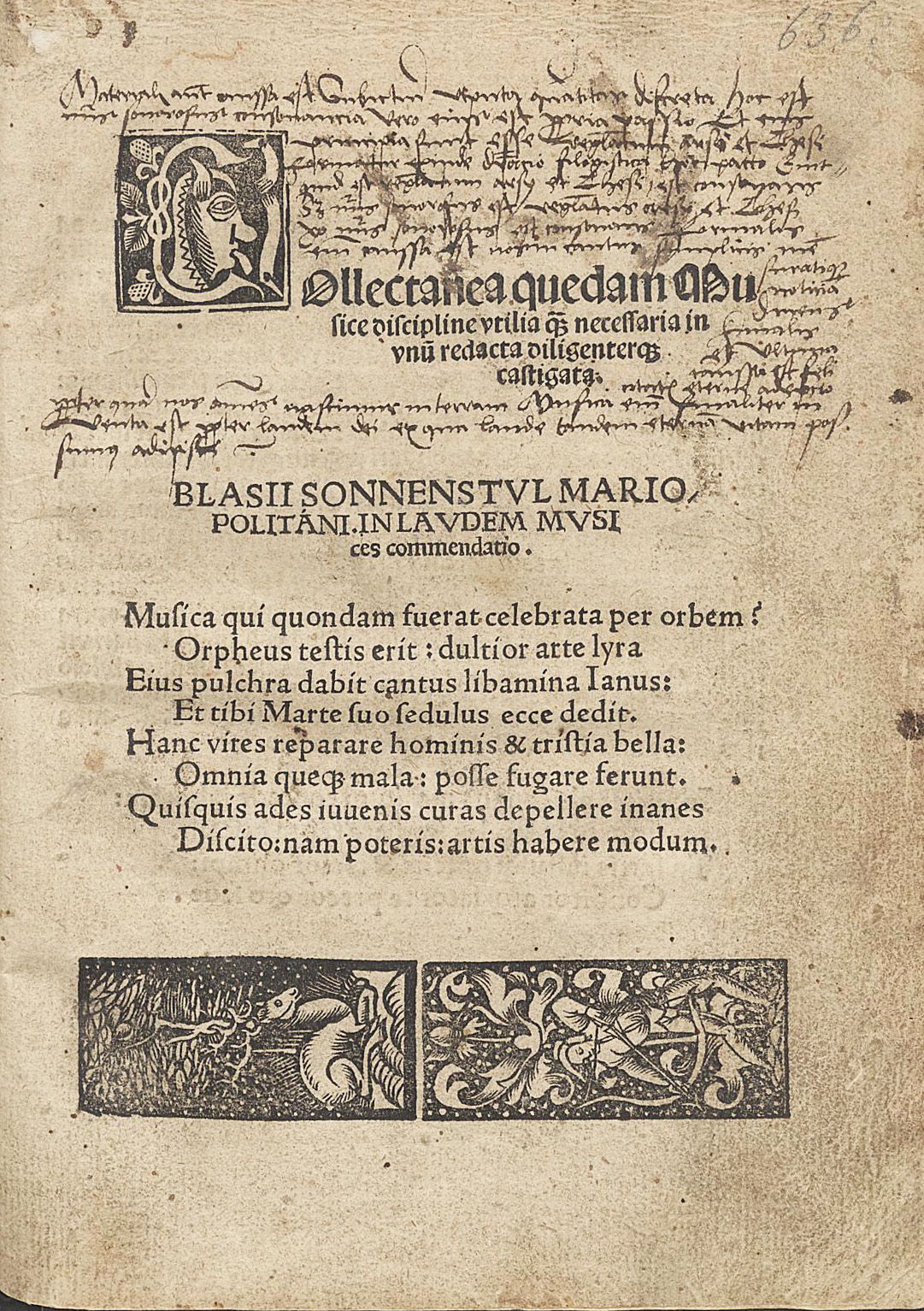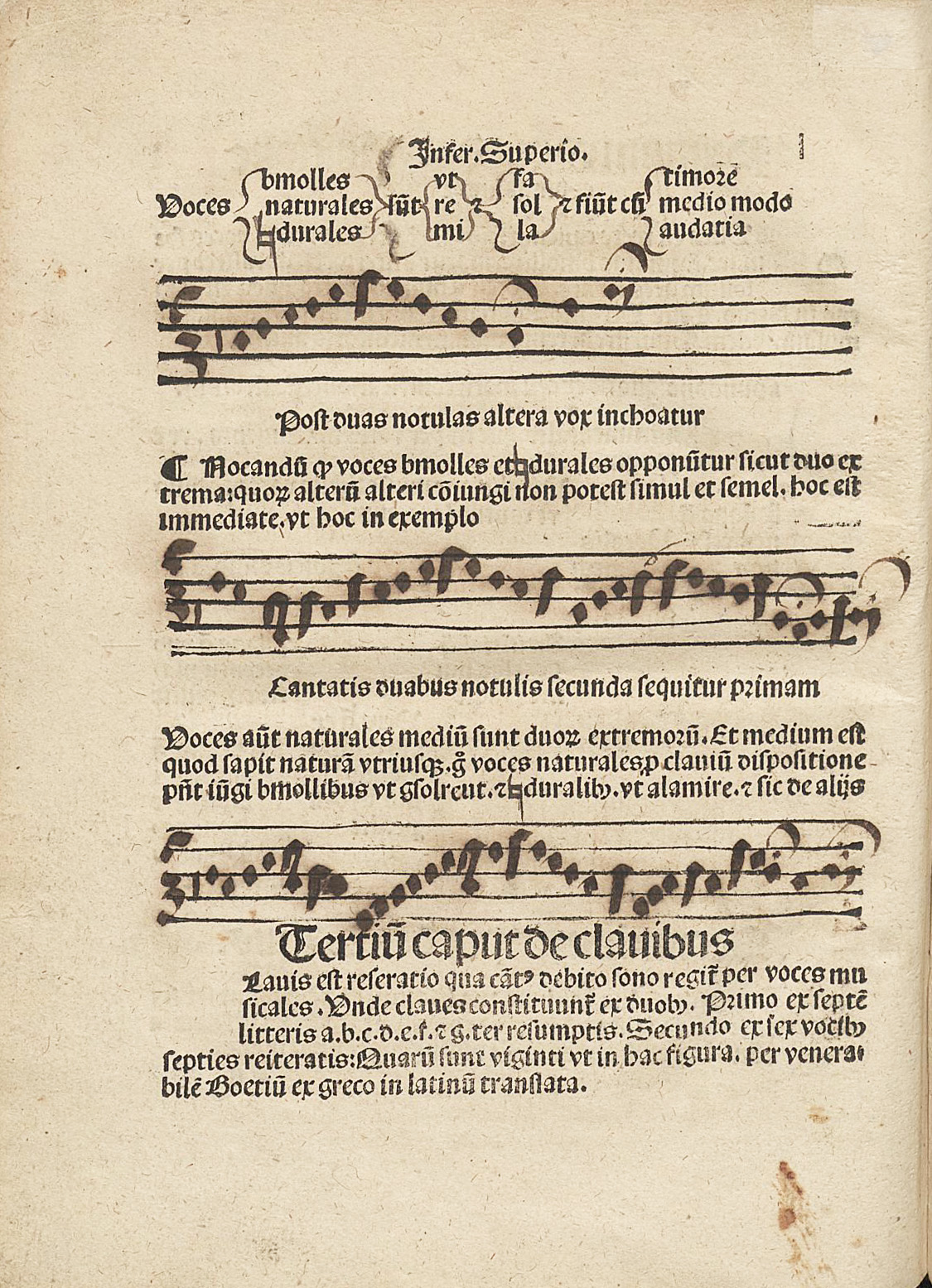Frankfurt an der Oder: [Johannes Hanau the Elder], 1513, vdm: 416
COllectanea quedam Mu||sice discipline vtilia ꝗ̃ necessaria in || vnũ redacta diligenterq𝔷 || castigata.|| [epigram by Blasius Sonnenstuhl]||
Est vobis: lectores amandi: opusculum Musices perpul⸗||chrum sane quoddam: q̃𝔷uis Calcographus notulas mi⸗||nus adiunxerit: nō erratui suo ascribetis velim || sed raritudini. Impressum Frācophor||dio ad Oderam. 4. Kal’. Ia||uuarias [sic]. Anno. 1513.
Frankfurt an der Oder
Theory book
The woodcut on the title page and D6v also reappear in VD16 S 2074, the colophon of which identifies the printer as Johannes von Hanau. The colophon of the present book begs the reader to excuse the fact that there is no printed music, laying it not to the charge of the printer, but to the rarity of music printing.
A1r: BLASII SONNENSTVL MARIO-||POLITANI. IN LAVDEM MVSI||ces commendatio. || Musica qui quondam fuerat celebrata per orbem? […]
A1v: Letter of dedication: Ioannes Volckmar omnibus dominis scholasticis. S.P.D. [A]dmonuistis iampridem scholastici candidissimi: quo ad preces […]. Dated Frankfurt a. d. Oder, decimooctauo Kal’. Ianuarias. Anno millesimoquingentesimotredecimo [= 15 Dec. 1512]. Followed by a tetrastich (Iuppiter altitonans meritum concede laborem […].)
A1r: Historiated initial C, two border woodcuts at the bottom of the page, one with a deer, the other with a youth aiming a bow and arrow.
D6v: woodcut of arms of bishop.
Latin
D-B Mus. ant. theor O 15a
D-B

empty staff lines
Even within the text spaces are left to insert musical signs etc. by hand.
the staff lines are printed from woodcuts. the first is:
length: 110 mm, 16 mm high
others are of slightly different length
Staff lines for music for four voices (Discantus, Tenor, Altus, Bassus).
example in theory book
Standard musical examples for both chant and mensural music. For examples first on intervals, psalm intonations, then note values, punctuation, mensuration etc.
*D-B

Heavily used
Musicae activae micrologus [Schumann 1517] - D-B (1)
All the musical examples and notation examples in the text have been added by hand, on the printed staves. Heavy annotation on fol. A1r-v in an early sixteenth-century hand, perhaps paraphrasing the beginning of Wollick’s Opus aureum.
Great number of handwritten diagrams and further explanations (of note values etc.), as well as entire musical examples entered by hand
On final page a handwritten note mentioning Brandenburg.
D-B